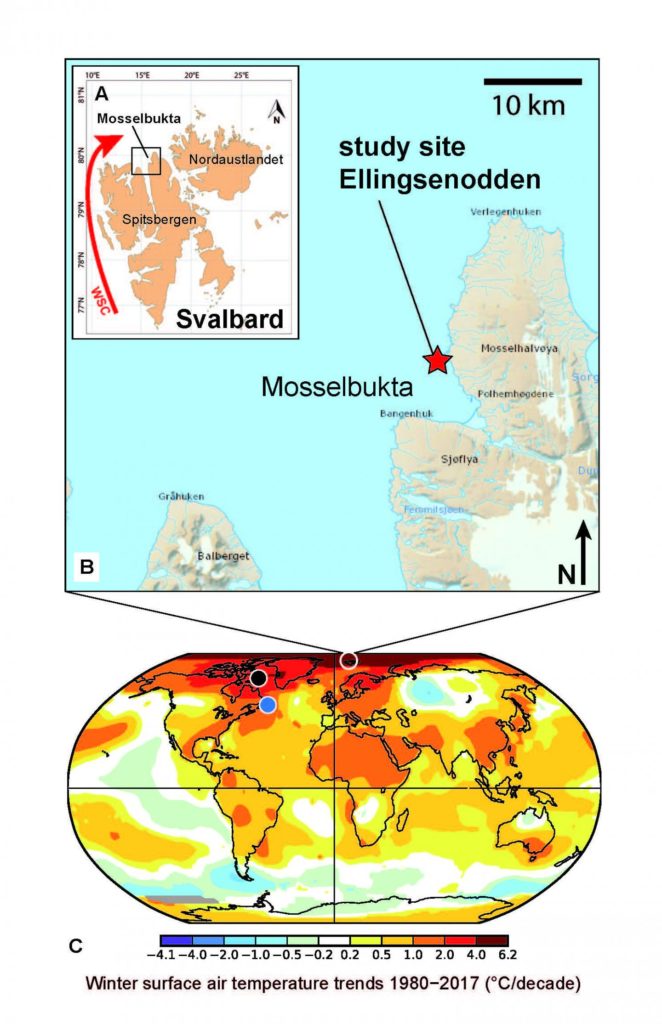Boulder, Colo., USA: Arctic sea-ice has decreased rapidly during the last decades in concert with substantial global surface warming. Both have happened much faster than predicted by climate models, and observed Arctic warming is much stronger than the global average. Projections suggest that Arctic summer sea-ice may virtually disappear within the course of the next fifty or even thirty years.
Although Arctic-wide warming during the 20th century is well documented, little is known about the response of sea-ice to abrupt warming and it is unclear when the sea-ice decline started. Data coverage in this region is highly restricted, with observation-based satellite data only available since the 1970s, too short to accurately calibrate climate models.
Limited observational records therefore hamper the assessment of long-term changes in sea-ice, leading to large uncertainties in predictions of its future evolution under global warming. In the absence of instrumental data, natural archives of environmental changes, so-called proxies can be used to extend climate data further back in time.
In this study published in
Geology
, Steffen Hetzinger and colleagues present the first annually resolved 200-year record of past sea-ice variability from High Arctic Svalbard (79.9°N) using a newly developed in situ proxy from long-lived encrusting coralline algae. Annual growth and Mg/Ca ratios in this photosynthesizing benthic marine plant are strongly dependent on light availability on the shallow seafloor, recording the duration of seasonal sea-ice cover.
This proxy opens up a new possibility to study past sea-ice variability, and unlike previously available reconstructions from mainly land-based archives, it provides an annually resolved direct in situ proxy from the surface ocean.
Due to the limited availability of instrumental data, current research largely focuses on sea-ice decline since the late 20th century. The results of this study provide evidence for an earlier start of Arctic sea-ice decline at the beginning of the 20th century, not captured by shorter observational records and land-based reconstructions.
The algae also show that lowest sea-ice values within the past 200 years occurred from the 1980s to the early 2000s. These results may help reduce the large uncertainties that exist among ocean model simulations, providing a new approach for the detection and verification of long-term Arctic sea-ice changes.
###
FEATURED ARTICLE
Early start of 20th century Arctic sea ice decline recorded in Svalbard coralline algae
Steffen Hetzinger
et al
.,
[email protected]
. URL:
https:/
/
pubs.
geoscienceworld.
org/
gsa/
geology/
article-abstract/
573355/
early-start-of-20th-century-arctic-sea-ice-decline
GEOLOGY
articles are online at
http://geology.
geoscienceworld.
org/
content/
early/
recent
. Representatives of the media may obtain complimentary articles by contacting Kea Giles at the e-mail address above. Please discuss articles of interest with the authors before publishing stories on their work, and please make reference to
GEOLOGY
in articles published. Non-media requests for articles may be directed to GSA Sales and Service,
[email protected]
.
/
www.
geosociety.
org
This part of information is sourced from https://www.eurekalert.org/pub_releases/2019-08/gsoa-eso083019.php
Kea Giles
[email protected]
http://www.geosociety.org


